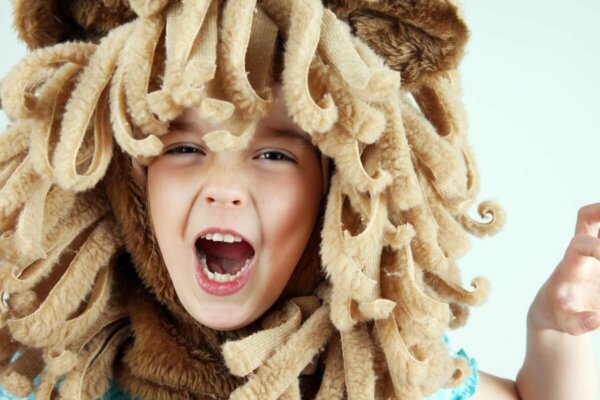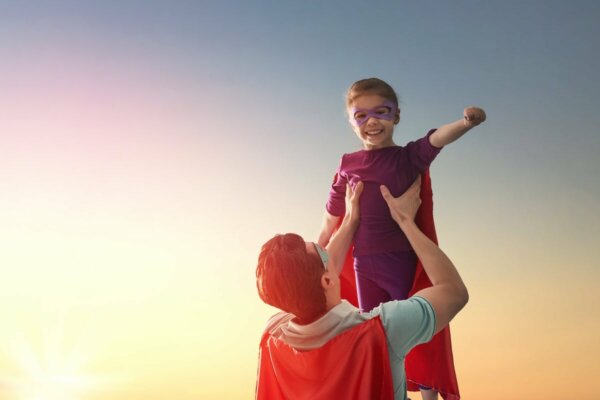The Psychological Benefits of Dressing Up

If you have children or maybe nephews or nieces, then you’ve surely discovered how easy it is for them to get dressed when they’re going to put on a costume – maybe a princess or superhero costume or another character that they admire. Children’s costumes are always a great success (and great fun) during childhood (and, in many cases, afterward too). Discover the psychological benefits of dressing up in this article!
Children usually love dressing up. They don’t understand racism or sexism. They simply see a costume they like, it stimulates their imagination, and they instantly dream of putting it on and visiting all those magical worlds where they feel so happy.
Thus, if a child wants to dress up, let them. Think of it as something that’s really going to benefit them. When they’re at this stage of their life, this experience is highly recommended and offers really positive psychological benefits, as we’ll explain below.
By the way, a child doesn’t only have to dress up for holidays. In fact, it’s a widely-used tool in nursery schools. This clearly shows that you don’t need the latest technology to stimulate your children and their proper development.

Dressing up: the child, imitation, and imagination
Children learn a lot from imitation. They notice everything around them and try to do the same. Thus, if they put on a bird costume, they’ll feel as if they’re flying and will want to chirp like a bird.
Parents are role models for children. Without a doubt, a mommy or daddy costume can teach them to be more self-sufficient and responsible. Sometimes, it’s as simple as putting on their father’s shoes or mother’s dress.
However, it’s important for the child to choose their own costume. On occasions, this may not be possible, as it could be a specific costume for a school function, for example. In cases like these, we can start preparing them to wear the costume a few days before the event.
We could even create a mask for them to wear so that they don’t feel so exposed. If there’s a complete transformation in their look, they may feel more relaxed.
“Coincidence is God’s way of remaining anonymous.”
-Albert Einstein-
Role discovery
From birth, children begin the long journey of developing their own personality. To do so, they discover different roles until they finally find their own voice and identity in their own social context.
Costumes help children discover different roles: protective and brave superheroes, friendly animals, fairy tale princesses and princes, responsible and generous doctors, etc. From there, they’ll get ideas that will help them develop their own personality.
It stimulates imagination
This is the most interesting benefit. The child learns to be more creative and improves their imaginative capacity. When they disguise themselves, as we’ve already mentioned, they actually think that they’re a daddy, a puppy, a doctor, a dragon, a little bird, a mommy, etc.
These days, creativity is a much-needed skill on a global level. We’re not just talking about artistic ability here. Finding creative formulas to solve problems and face the ups and downs of life is always indispensable in many different areas, both personal and professional.
Emotional development
Dressing up also helps a child have better emotional development. A child wearing a disguise can find, and imagine, other points of view. Why? Because those costumes will allow them to live out other people’s lives in their imaginations. They’ll experience the person’s feelings and emotions and will, ultimately, be more empathetic to other ways of seeing the world.
It prevents the child from feeling embarrassed or shy
Not all children use the same strategies to deal with their fears. A good option, especially for particularly shy children, is the use of a disguise. This way, the traits of the costume they wear can be incorporated into their own personality. This will, as a result, benefit their social and personal development.
Imagine a shy child who’s unable to cope with adversity. In this case, perhaps a Superman or Supergirl costume would help them feel the confidence they need to overcome a particular situation.

Development of empathy
We can also use costumes for children to develop their empathy. By introducing them to the role of other characters, they can learn how they behave, feel, and relate to others. This way, children will understand other people better, socialize more appropriately, and also understand other people’s problems.
Improving communication skills
When a child feels more confident, they’ll have fewer communication problems. In addition to this, they’ll even acquire a vocabulary more in line with the character they’re playing. They’ll learn new words, use different linguistic styles from those they usually use, and discover new methods of conflict resolution, etc.
Sociability
The child’s costume helps them to socialize with their peers, friends, and family, etc. For example, if everyone is dressed as a police offers, it can create friendly talk or collaboration.
Therefore, dressing up is a very positive element in human development. It’s a way to learn, get to know other perspectives and, of course, help the little ones have a great time while they discover professions, trades, amusements, and even the world of animals and vegetables.
All cited sources were thoroughly reviewed by our team to ensure their quality, reliability, currency, and validity. The bibliography of this article was considered reliable and of academic or scientific accuracy.
Castillo Viera, E., Tornero Quiñones, I. (2012). Análisis de los valores que trasmiten los disfraces en la etapa de Educación Infantil y propuesta de modificación para su inclusión en clase de Educación Física. EmásF, Revista Digital de Educación Física. Año 3, nº 14.
This text is provided for informational purposes only and does not replace consultation with a professional. If in doubt, consult your specialist.








